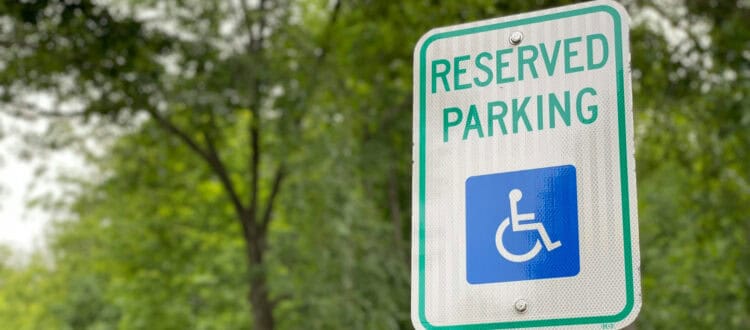Handicap parking signs serve as a crucial navigational tool for individuals with disabilities, providing designated parking spaces close to entrances to ensure accessibility and convenience. These signs are not only a legal requirement but also a symbol of inclusivity and support for people with mobility challenges.
By clearly marking these parking spaces with distinctive signage, society acknowledges the need for equal access and accommodation for all. These signs play a key role in promoting awareness and understanding of the daily obstacles faced by individuals with disabilities, ultimately contributing to a more accessible and inclusive environment for everyone.
Why Handicap Parking Signs?
Handicap parking signs are essential to ensure that individuals with disabilities have equal access to public spaces and facilities. These signs designate parking spaces close to entrances, making it easier for people with mobility challenges to access buildings and services. Without these designated spaces, individuals with disabilities may face significant barriers in their daily lives, limiting their ability to participate fully in society. They not only provide physical access but also send a positive message of inclusion and support for the disabled community. By designating these parking spaces, society acknowledges the importance of accommodating individuals with disabilities and strives to create a more equitable and accessible environment for all.
What Material are Handicap Parking Signs Made of?
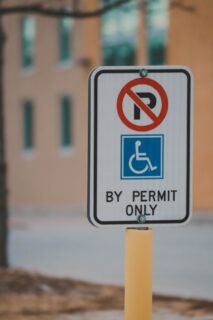 Handicap parking signs are predominantly made from high-quality aluminum due to its lightweight, durability, and resistance to harsh environmental conditions. This material, often referred to as alodized or anodized aluminum, is specifically chosen for its ability to withstand corrosion, making it ideal for outdoor use. The .080” thickness of these aluminum signs, and the ASTM 5052-H38 sign grade alloy, ensures long-lasting performance and a professional appearance.
Handicap parking signs are predominantly made from high-quality aluminum due to its lightweight, durability, and resistance to harsh environmental conditions. This material, often referred to as alodized or anodized aluminum, is specifically chosen for its ability to withstand corrosion, making it ideal for outdoor use. The .080” thickness of these aluminum signs, and the ASTM 5052-H38 sign grade alloy, ensures long-lasting performance and a professional appearance.
To enhance visibility, especially in low-light conditions, these signs are sheeted with reflective materials like 3M™ Engineer Grade reflective sheeting. The combination of aluminum’s resilience and the reflective properties of the sheeting make these signs a reliable choice for marking handicap parking spaces, ensuring they remain visible and effective for years, typically up to a decade and longer. Also, the production of these signs in America supports local jobs and reduces environmental impacts associated with transportation.
What Signs Do You Need for Handicap Parking Spaces?
For handicap parking spaces, it’s essential to have clear and visible signs to indicate their designation. The primary sign required is the international symbol of access, which features a white graphic of a person in a wheelchair on a blue background. This symbol is universally recognized and signals that the parking space is reserved for individuals with disabilities.
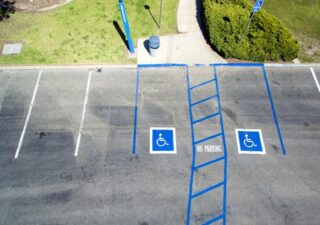 Also, signs indicating “Van-Accessible” spaces are crucial to accommodate larger vehicles with wheelchair lifts or ramps. These signs typically include the international symbol of access along with the text “Van-Accessible” to ensure that drivers are aware of the specific accommodation provided. Furthermore, it’s important to have signs indicating any relevant parking restrictions, such as time limits or permit requirements, to ensure the efficient use of these designated spaces and to deter misuse.
Also, signs indicating “Van-Accessible” spaces are crucial to accommodate larger vehicles with wheelchair lifts or ramps. These signs typically include the international symbol of access along with the text “Van-Accessible” to ensure that drivers are aware of the specific accommodation provided. Furthermore, it’s important to have signs indicating any relevant parking restrictions, such as time limits or permit requirements, to ensure the efficient use of these designated spaces and to deter misuse.
In addition, it’s crucial to have signage that indicates the penalties for unauthorized use of handicap parking spaces. Clear and visible warnings about fines and towing for violators can serve as a deterrent and help enforce compliance with handicap parking regulations. These signs often feature bold lettering and specific information about the consequences of parking in a designated handicap spot without proper authorization. By prominently displaying these penalty signs, it reinforces the importance of respecting the designated spaces for individuals with disabilities and helps maintain accessibility for those who truly need it.
What are ADA Compliant Handicap Parking Signs?
ADA compliant handicap parking signs adhere to the guidelines set forth by the Americans with Disabilities Act (ADA) to ensure accessibility for individuals with disabilities. These signs feature the international symbol of access, a white graphic of a person in a wheelchair on a blue background, which must be a specific size and displayed at a certain height for visibility.
They also include raised characters and Braille to assist visually impaired individuals in identifying the designated parking spaces. The signs must also have high color contrast between the background and the text to enhance readability. These signs often indicate any relevant parking restrictions and provide information on penalties for unauthorized use to promote compliance with ADA regulations and ensure equal access for all individuals.
How to Comply with ADA Parking Requirements?
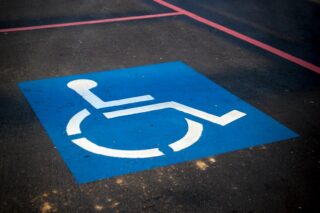 ADA compliant handicap parking signs are designed to meet specific requirements to ensure accessibility for individuals with disabilities. These signs must prominently display the International Symbol of Access (ISA), which is a white figure on a blue background, with the blue matching Color No. 15090 in Federal Standard 595B for consistency and visibility. The signs must be mounted at least 60 inches above the ground to remain unobstructed by parked vehicles.
ADA compliant handicap parking signs are designed to meet specific requirements to ensure accessibility for individuals with disabilities. These signs must prominently display the International Symbol of Access (ISA), which is a white figure on a blue background, with the blue matching Color No. 15090 in Federal Standard 595B for consistency and visibility. The signs must be mounted at least 60 inches above the ground to remain unobstructed by parked vehicles.
For van-accessible spaces, additional signage with the text “Van Accessible” is required to inform users of the larger space dimensions and access aisles provided for these vehicles. The size of the parking spaces must adhere to ADA standards, with standard spaces being a minimum of 96 inches wide and van-accessible spaces being 132 inches wide, both with appropriate access aisles.
These signs are not only a legal requirement but also serve to guide individuals with disabilities to the nearest accessible entrance, as they must be located on the shortest accessible route from the parking space to the facility entrance. The use of the ISA on these signs is mandated by the ADA Standards to identify accessible parking spaces, entrances, and other facilities. Ensuring that these signs are correctly installed and maintained is crucial for compliance and for providing clear guidance to accessible features within parking lots and adjacent buildings.
Do Handicap Parking Signs Need to Comply to the MUTCD Standards?
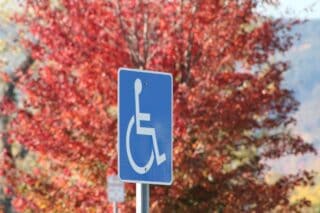 They are required to comply with the Manual on Uniform Traffic Control Devices (MUTCD) standards, which are set forth by the Federal Highway Administration to ensure uniformity and safety in traffic control devices across the United States. These standards specify the design and placement of signs, including the use of the International Symbol of Accessibility, the height at which signs must be mounted, and the inclusion of additional information such as “van accessible” for certain parking spaces.
They are required to comply with the Manual on Uniform Traffic Control Devices (MUTCD) standards, which are set forth by the Federal Highway Administration to ensure uniformity and safety in traffic control devices across the United States. These standards specify the design and placement of signs, including the use of the International Symbol of Accessibility, the height at which signs must be mounted, and the inclusion of additional information such as “van accessible” for certain parking spaces.
While the MUTCD provides a consistent framework, individual states may adopt the national MUTCD standards directly, supplement them with additional requirements, or develop their own MUTCD, which must be approved by the FHWA. For instance, North Carolina’s requirements for handicapped parking space identification include state-specific details that must be followed to ensure compliance. It is important for property owners and regulatory bodies to be aware of both federal and state-specific requirements to ensure that all handicap parking signs meet the necessary legal standards and effectively serve the needs of individuals with disabilities.
Do Handicap Parking Signs Need to be Reflective?
Yes, they are required to be reflective to ensure high visibility, especially during low-light conditions. Reflective signs are crucial for enhancing safety and aiding drivers in identifying the designated handicap parking spaces, particularly at night or in poorly lit areas. Reflective materials, such as 3M™ Engineer Grade reflective sheeting, are used to sheet handicap parking signs, allowing them to reflect light from headlights, making them easily visible from a distance. This increased visibility helps prevent accidents and ensures that drivers can clearly discern the presence of handicap parking spaces, promoting accessibility and safety for individuals with disabilities.
Can You Make Your Custom Handicap Parking Sign?
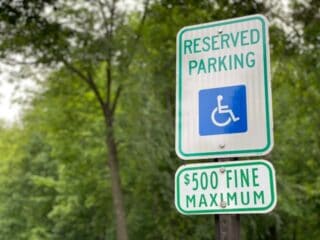 While it’s technically possible to create a custom handicap parking sign, it’s important to adhere to all relevant regulations and standards to ensure compliance with local and federal laws. Custom signs must include the International Symbol of Access (ISA) and any additional information required by the Americans with Disabilities Act (ADA), such as the “Van Accessible” designation for specific parking spaces. Also, the size, color, and mounting height of the sign must meet the standards outlined in the Manual on Uniform Traffic Control Devices (MUTCD) to ensure visibility and accessibility.
While it’s technically possible to create a custom handicap parking sign, it’s important to adhere to all relevant regulations and standards to ensure compliance with local and federal laws. Custom signs must include the International Symbol of Access (ISA) and any additional information required by the Americans with Disabilities Act (ADA), such as the “Van Accessible” designation for specific parking spaces. Also, the size, color, and mounting height of the sign must meet the standards outlined in the Manual on Uniform Traffic Control Devices (MUTCD) to ensure visibility and accessibility.
It’s crucial to consult with local authorities or accessibility experts to ensure that any custom signs meet all necessary requirements and do not inadvertently create confusion or non-compliance issues. Working with a reputable sign manufacturer or designer with expertise in ADA compliance can help ensure that any custom handicap parking signs are properly designed and fabricated to meet all legal and accessibility standards.
Conclusion
Handicap parking signs ensure accessibility and safety for individuals with disabilities. These signs must comply with specific regulations, including those outlined in the Americans with Disabilities Act (ADA) and the Manual on Uniform Traffic Control Devices (MUTCD), to ensure uniformity, visibility, and proper designation of handicap parking spaces. The use of the International Symbol of Access (ISA), along with additional information such as “van accessible,” reflects the specific needs of individuals with disabilities and helps guide drivers to the appropriate parking spaces. Reflective materials and proper mounting heights further enhance the visibility and effectiveness of these signs, especially in low-light conditions. Hence, the careful design, placement, and maintenance of these signs are vital in promoting inclusivity and accessibility within public and private parking facilities.
Popular Posts:

